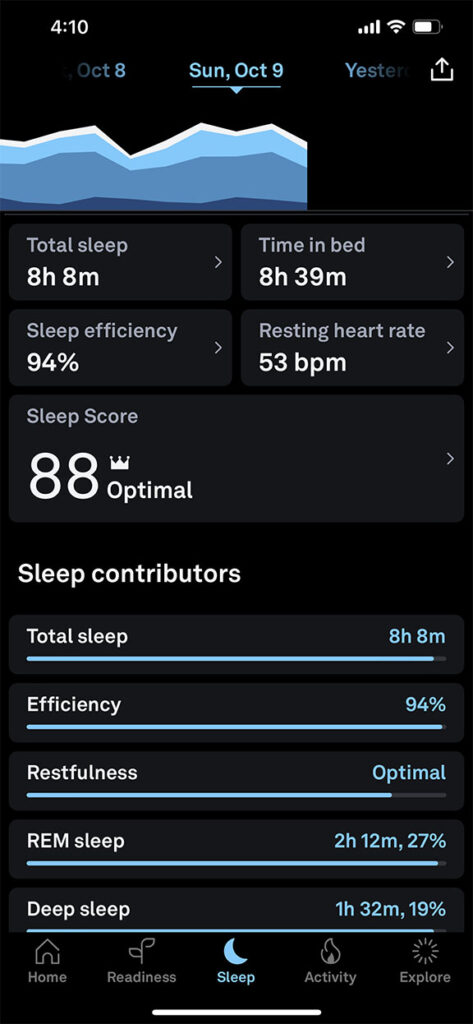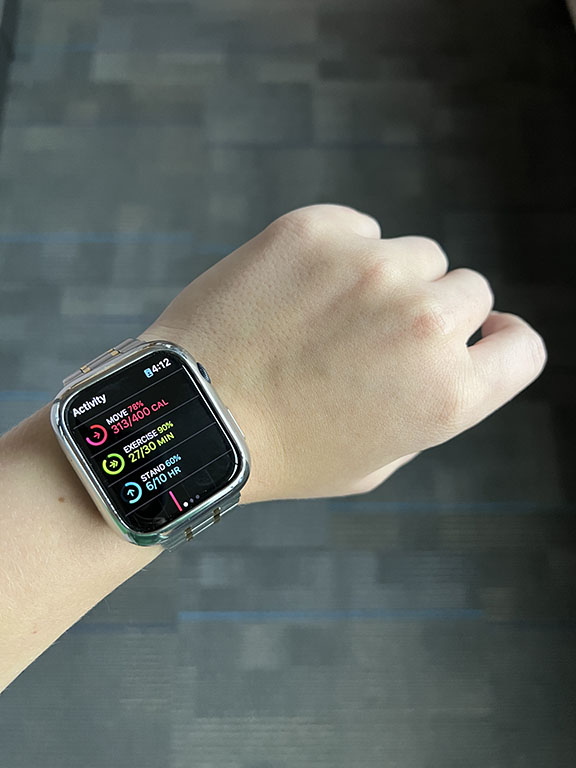By Elizabeth Wulfhorst
Whether you are just starting an exercise routine or have been working out for years, wearable trackers and smartwatches can help you reach your fitness goals.
From a simple wrist or chest strap that tracks steps or heart rate, to rings and watches that record running routes, heart rate variability, blood oxygen levels, how you are sleeping or even if you’re getting sick, there is definitely a product for every need – although it may take some research to figure out which is best for you.
“Everybody has a maximum heart rate, which is 220 minus your age, so you don’t want to really go much over that” when you are exercising, explained Holly Sharon, a longtime trainer at Jersey Strong in Tinton Falls, who prefers a tracker with a heart rate monitoring function.
Knowing your heart rate at rest and exercising can lead to more effective workouts, Sharon said. “If your resting heart rate is 70 and when you work out, you’re getting it up to 80, that’s not really that much higher,” she said. “Maybe you need to work out a little harder.”
If you are just interested in counting your steps, a simple pedometer, like the Realalt 3D TriSport Walking Pedometer for about $25, might suffice. Most smartphones have a built-in pedometer, so carrying your phone in a pocket all day might also be perfect for you.
A study from the National Institutes of Health (NIH) and the Centers for Disease Control and Prevention (CDC) found that taking 8,000 steps a day was associated with a 51% lower risk of death from all causes than taking only 4,000 steps a day. Taking 12,000 steps per day was associated with a 65% lower risk, so shooting for 10,000 steps a day is a great goal for many.
Additionally, according to the current Physical Activity Guidelines for Americans from the U.S. Department of Health and Human Services, adults should have 150 minutes of moderate-intensity physical fitness and two days of muscle-strengthening activity every week. The CDC calls physical activity “anything that gets your body moving.”
For those who want to track more than steps – like specific exercises or even sleep quality – options from Fitbit, Apple, Garmin, Polar and more are available at many price points.

Oura, a more recent addition to the tracking industry, offers a wearable in ring form, which some find less cumbersome to wear throughout the day and night than a watch. Paired to an app on a smartphone, Oura tracks your resting heart rate, heart rate variability, respiratory rate, body temperature, steps and more. It gives a readiness score each day based on sleep and recovery, and sets an activity goal for the day. The Oura can even predict when you’re getting sick, one of the reasons the NBA offered it to its players during the COVID-19-triggered bubble in 2020.
Similarly, Whoop is a wristband (no watch face) that effectively monitors sleep, training and health. The tracker is free with a paid membership of $30 a month or $480 for 24 months.
At $350 with a required $6 monthly membership, the Oura is one of the more expensive trackers on the market and neither the Whoop nor Oura may tick all the functionality boxes.
Runners may prefer a running-specific watch like the Garmin Forerunner or Instinct models (most in the $350-$400 range) which track routes, course details, pace, distance and more. Polar, a company that pioneered the wearable fitness tracking industry, offers watches, but also sensors that are worn around the chest to accurately monitor heart rate during exercise. Linked to an app, the Polar H10 ($90) detects average heart rate, maximum heart rate and calories burned during a workout. It also alerts to when you are burning fat or improving fitness during exercise.
Many fitness trackers will recognize when you begin exercising and ask if you’d like to start tracking a specific workout. They will also let you set goals – or set them for you – and reward you with badges and praise when you reach them.
Sharon said she likes the Apple Watch ($250-$800) because of the types of tracking available, from simple step counting to dozens of exercises, like yoga, running, tennis, high-intensity interval training and much more. “The watch sets goals for you and you can get awards for reaching those goals,” she said. “It makes fitness a little more fun.”
“I’m kind of hooked on tracking,” said Sharon, who transitioned from a Fitbit to the Apple Watch during the pandemic.
Sharon said it doesn’t make her anxious to track her activities throughout the day, but she has seen that happen to others. “I have a client who literally won’t want to work out if she forgets to start (the tracker) or it doesn’t work,” she said. But Sharon stressed that exercise is good for your body whether it’s being tracked or not.
“I might be disappointed if I couldn’t wear it but I would get on with my day and know that I’m still working hard.”
Tracking for her is “calming. When I look at my heart rate, it’s reassuring to me to see you’re doing what you need to do to stay healthy,” Sharon said.
The article originally appeared in the October 13 – 19, 2022 print edition of The Two River Times.















